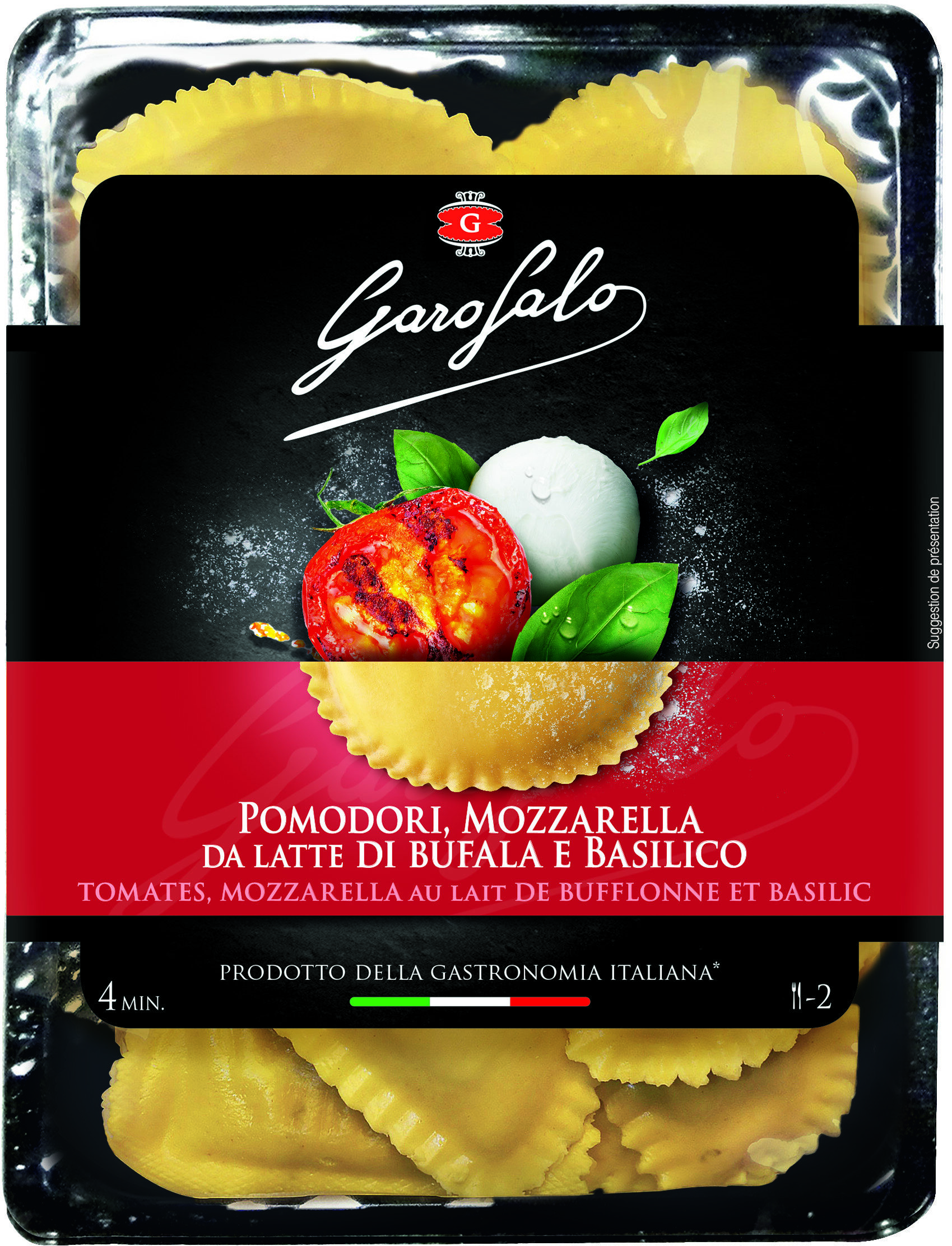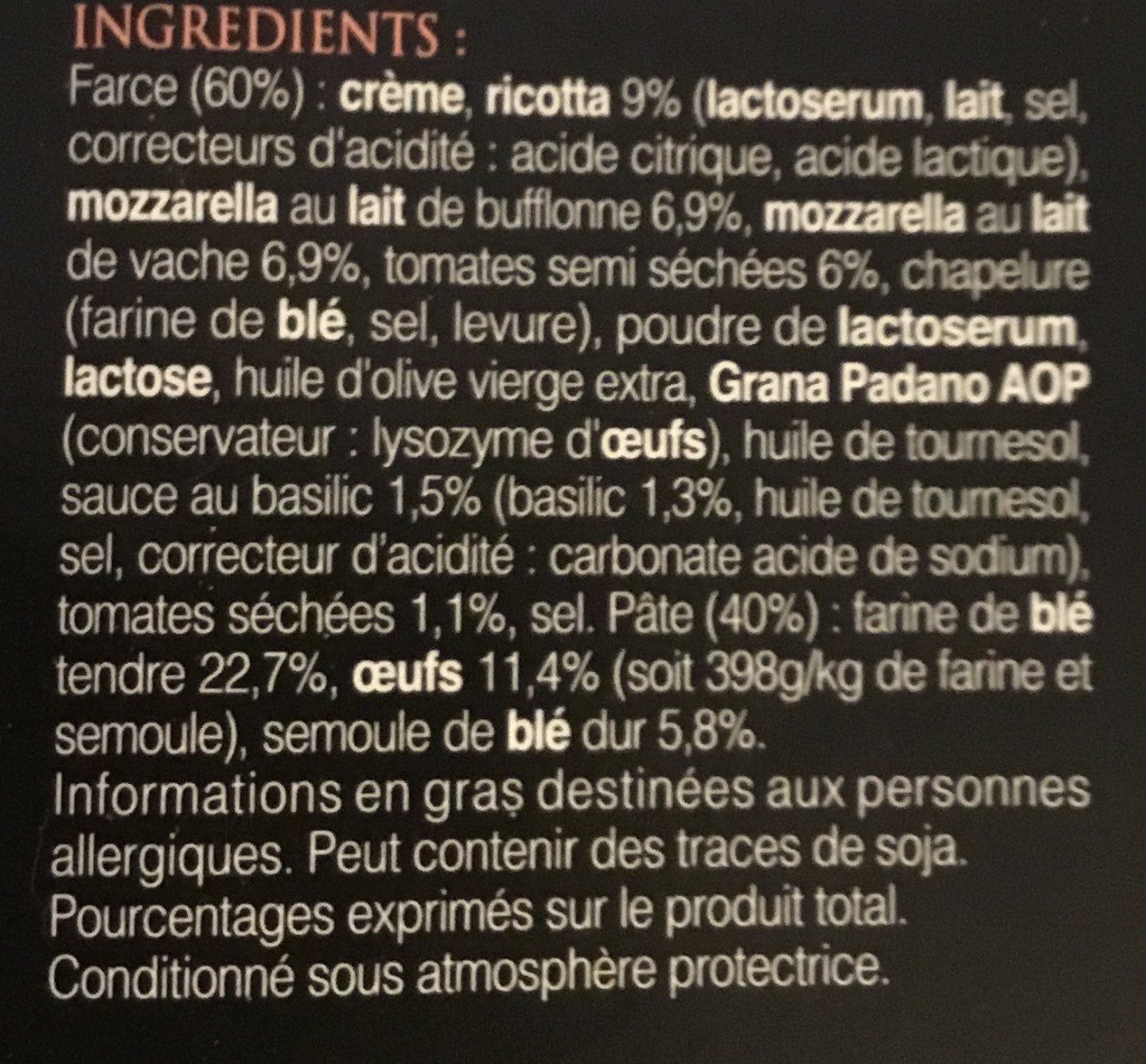Garofalo Mozzarella - 250 g
This product page is not complete. You can help to complete it by editing it and adding more data from the photos we have, or by taking more photos using the app for Android or iPhone/iPad. Thank you!
×
Some of the data for this product has been provided directly by the manufacturer LUSTUCRU FRAIS.
Barcode: 3240931543505 (EAN / EAN-13)
Common name: Pâtes fraîches à la farine de blé tendre et à la semoule de blé dur aux oeufs farcies à ricotta, mozzarella au lait de bufflonne et lait de vache, tomates séchées et au basilic.
Quantity: 250 g
Packaging: en:Plastic, en:Cardboard, en:pack, en:Refrigerated, en:Tray, fr:Film en plastique
Brands: Garofalo
Categories: en:Plant-based foods and beverages, en:Plant-based foods, en:Cereals and potatoes, en:Cereals and their products, en:Meals, en:Pasta dishes, en:Pastas, en:Stuffed pastas, en:Fresh pasta, en:Refrigerated foods, en:Refrigerated meals
Labels, certifications, awards:
en:Green Dot, en:Made in Italy
Origin of the product and/or its ingredients: Origine du produit : Italie # Origine de l'ingrédient primaire " Tomates" : UE et non-UE # Origine de l'ingrédient primaire " Mozzarella" : Italie # Origine de l'ingrédient primaire " Basilic" : Italie
Manufacturing or processing places: Italie
Traceability code: IT 1015 L CE
Matching with your preferences
Environment
Packaging
Transportation
Other information
Preparation: Sortez les pâtes du réfrigérateur quelques minutes avant la cuisson. Portez à ébullition 2 litres d'eau non salée. Plongez les pâtes dans l'eau et baissez à feu moyen pour couper l'ébullition; remuez régulièrement les pâtes. Après 4 minutes ôtez-les de la casserole à l'aide d'une écumoire.
Conservation conditions: à conserver au frais entre 0°C et +4°C Après ouverture, refermer la barquette avec du film alimentaire et conserver 24h maximum entre 0°C et 4°C.
Customer service: Service consommateurs Garofalo France Frais, 67, Cours Mirabeau 13100 AIX EN PROVENCE
Report a problem
Data sources
The manufacturer LUSTUCRU FRAIS uses Equadis to automatically transmit data and photos for its products.
Product added on by openfoodfacts-contributors
Last edit of product page on by org-lustucru-frais.
Product page also edited by beniben, date-limite-app, drunkenbison, foodvisor, hungergames, kiliweb, org-panzani-sa, packbot, quechoisir, roboto-app, yuka.Vko4K1Rma3VxOTBLdmNNODBnbm53T3BKeEpQM1QzK0xFc3dkSVE9PQ, yuka.WXJsWktJMGptcWNCbWNFUi9EVGNwZlZ5MmJ5bWRFaUhkTVlJSWc9PQ, yuka.sY2b0xO6T85zoF3NwEKvlnNdWPX5rmP5LA7ushXTxMyldsDWTPBd-aHdaqs.
Last check of product page on by beniben.











